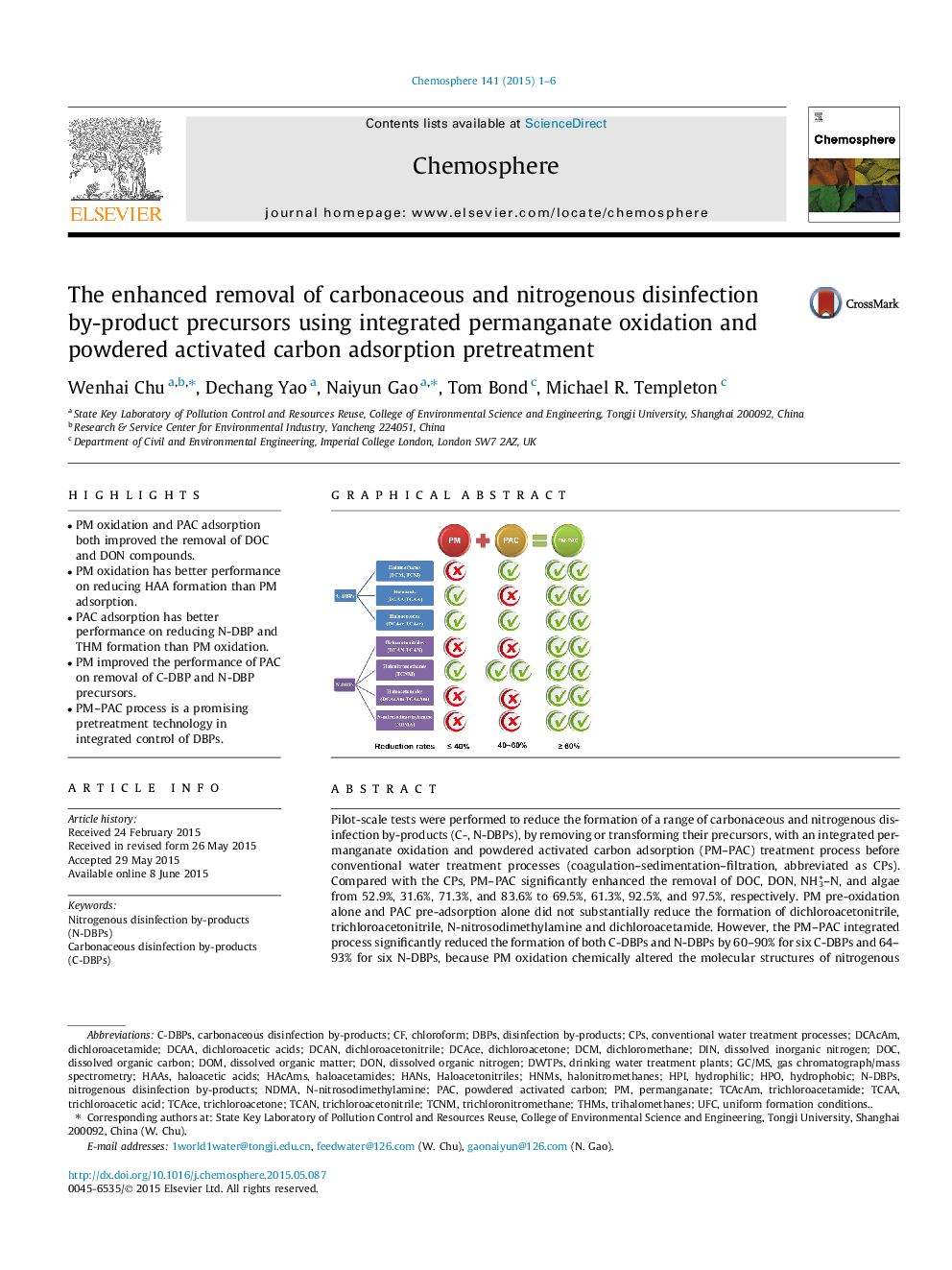| Article ID | Journal | Published Year | Pages | File Type |
|---|---|---|---|---|
| 6307320 | Chemosphere | 2015 | 6 Pages |
â¢PM oxidation and PAC adsorption both improved the removal of DOC and DON compounds.â¢PM oxidation has better performance on reducing HAA formation than PM adsorption.â¢PAC adsorption has better performance on reducing N-DBP and THM formation than PM oxidation.â¢PM improved the performance of PAC on removal of C-DBP and N-DBP precursors.â¢PM-PAC process is a promising pretreatment technology in integrated control of DBPs.
Pilot-scale tests were performed to reduce the formation of a range of carbonaceous and nitrogenous disinfection by-products (C-, N-DBPs), by removing or transforming their precursors, with an integrated permanganate oxidation and powdered activated carbon adsorption (PM-PAC) treatment process before conventional water treatment processes (coagulation-sedimentation-filtration, abbreviated as CPs). Compared with the CPs, PM-PAC significantly enhanced the removal of DOC, DON, NH3+-N, and algae from 52.9%, 31.6%, 71.3%, and 83.6% to 69.5%, 61.3%, 92.5%, and 97.5%, respectively. PM pre-oxidation alone and PAC pre-adsorption alone did not substantially reduce the formation of dichloroacetonitrile, trichloroacetonitrile, N-nitrosodimethylamine and dichloroacetamide. However, the PM-PAC integrated process significantly reduced the formation of both C-DBPs and N-DBPs by 60-90% for six C-DBPs and 64-93% for six N-DBPs, because PM oxidation chemically altered the molecular structures of nitrogenous organic compounds and increased the adsorption capacity of the DBP precursors, thus highlighting a synergistic effect of PM and PAC. PM-PAC integrated process is a promising drinking water technology for the reduction of a broad spectrum of C-DBPs and N-DBPs.
Graphical abstractDownload full-size image
